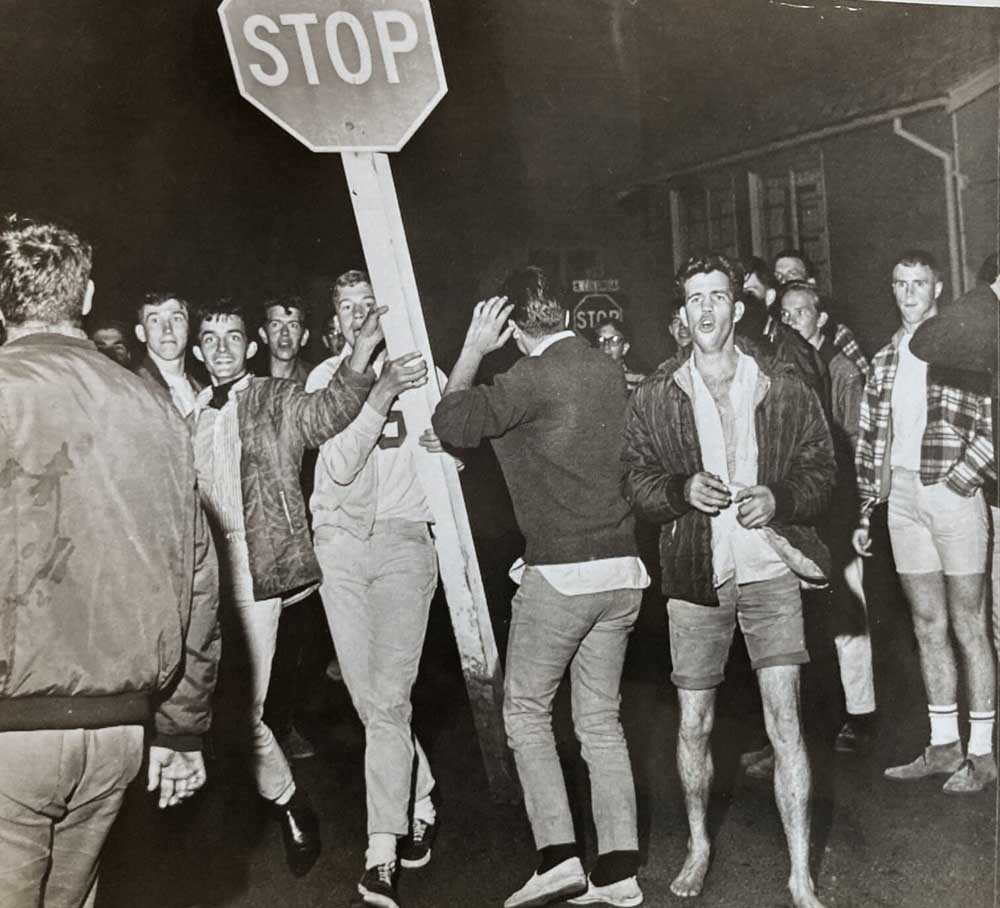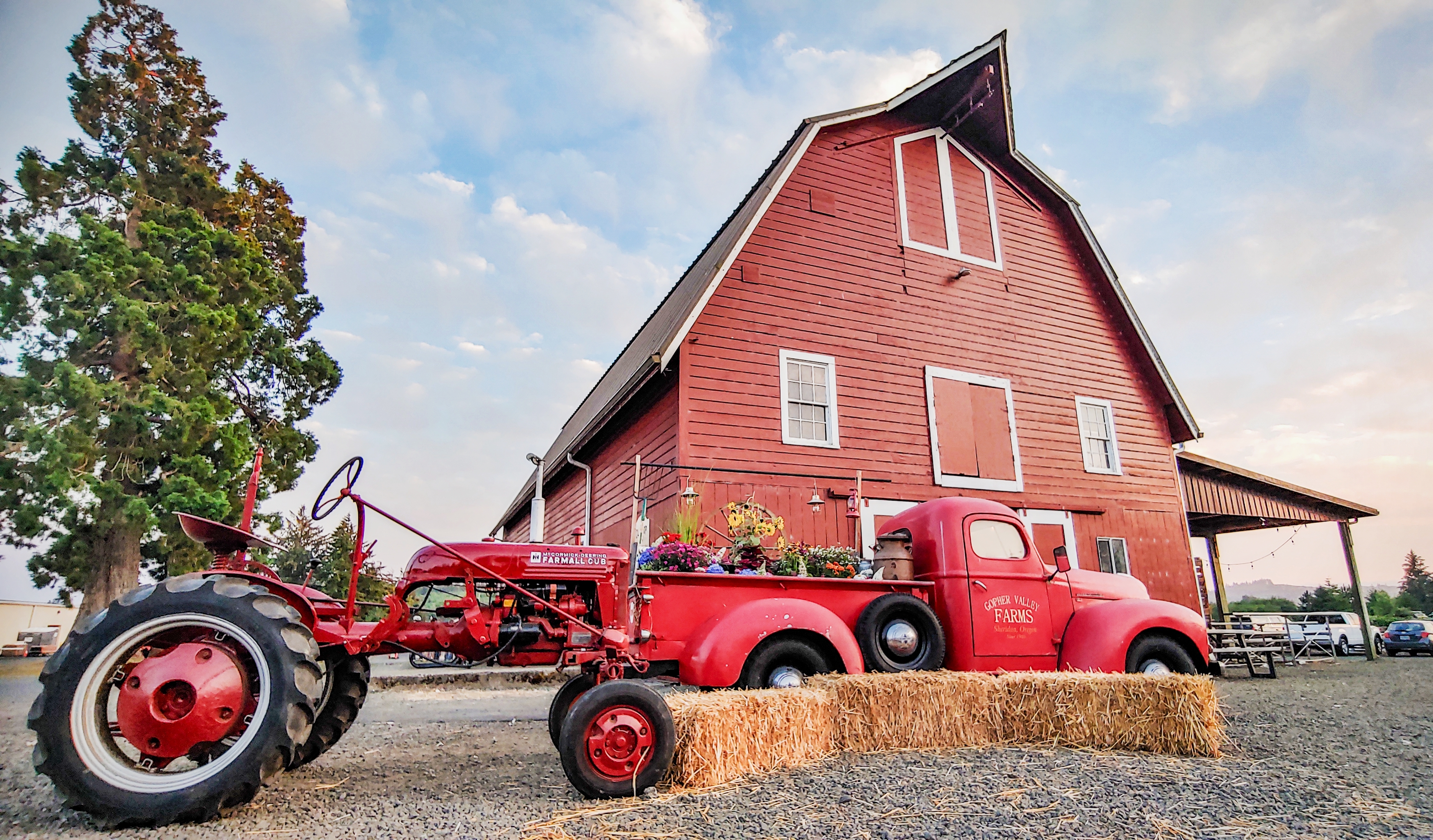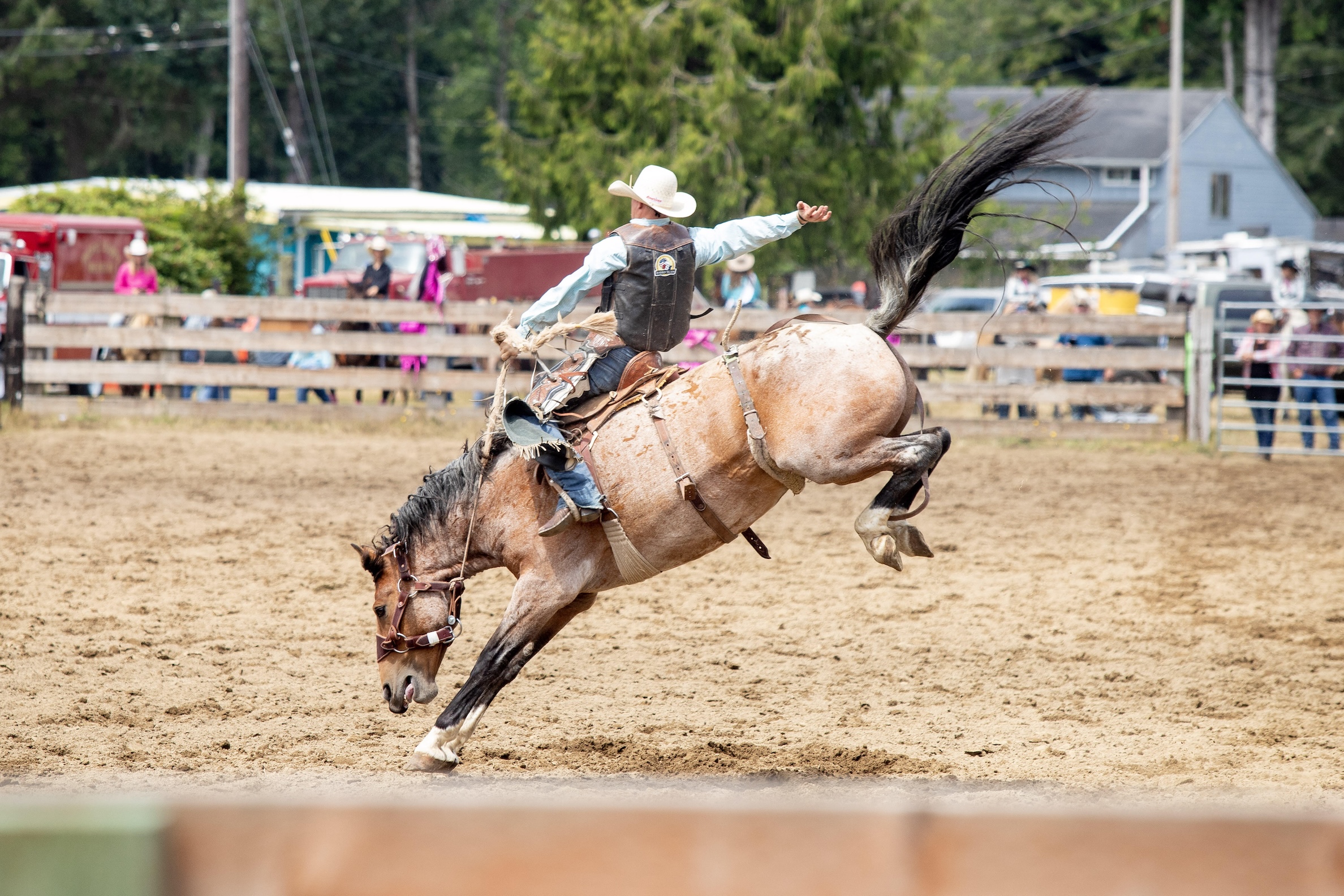Weekend Break: ‘I wanted to know more’
Published 1:00 pm Friday, November 29, 2024

- Crowds tear away a stop sign as they move down Broadway in 1964.
History’s unwieldy path sometimes embodies events that many would prefer to forget.
Author R.J. Marx has brought one of the Oregon Coast’s more tumultuous chapters to light in a new book, “Seaside’s Rock ‘n’ Roll Riots 1962-1964: How A Coastal City’s Labor Day Riots Heralded A Decade Of Unrest.”
“It’s a history that was whitewashed and silenced for 50 years,” Marx said. “I wanted to know more about it and why reporting seemed pretty thin, as if purposefully ignored.”
Trending
Marx, who retired last year as editor of the Seaside Signal and South County reporter for The Astorian, captures the three consecutive Labor Day weekends of 1962, 1963 and 1964, when thousands of young people flocked to Seaside to party, dance and raise mayhem — only to be met with the full force of the law.
“At first, I thought it was party, party, party,” said Marx, who had seen articles about the riots but thought of them as simple revelry.
Curious to discover more about the incidents and events leading up to them, he delved into the Signal’s archives — “a treasure trove” compiled since 1905 — and found much more than teens frolicking in a beach town.
He discovered a story of the 1960s, a story about a small city and the violent clashing of generations, and one that still has repercussions playing out decades later.
According to Marx, Labor Day Weekend 1962 was all about rock ‘n’ roll, drinking, sex and dancing wildly — on the beach and on the rooftop of Seaside’s Pypo Club as The Fabulous Wailers rocked the stage. But it had its dark moments.
To quell the disorder, police resorted to violence, beating with batons as firemen aimed hoses against the revelers and sent crowds screaming down the street.
Trending
Maurice Pysher, Seaside’s mayor at the time, told The Oregonian that college-age students would “not be welcome in Seaside” anymore, and moved to restrict them from renting hotel and motel rooms.
But the crowds returned, to which city officials and law enforcement in Seaside reacted aggressively.
“The violence kept escalating,” Marx said. “In 1964, Seaside achieved national prominence, pulling out all the stops involving local, county and state police and even the Army National Guard. The challenges between the rioters and the authorities were indicative of the generation gap and the growing national divide.”
Seaside wasn’t alone, Marx noted. Youth riots disrupted resort communities across the United States in the early- to mid-1960s, in places like Hampton Beach, New Hampshire, and Ocean City, Maryland.
In the months leading up to Lyndon B. Johnson’s election as president in 1964, FBI director J. Edgar Hoover included Seaside in a lengthy report on urban violence.
“Resorts and city streets evolved into cultural demonstrations,” Marx said.
Business suffered, real estate plummeted, people were injured and young lives were ruined as participants risked being expelled from colleges, losing jobs or carrying the onus of an arrest record.
Marx’s book illuminates a microcosm of a pivotal time, not only in Seaside’s history but in the nation’s.
“I knew it was a story I wanted to do,” Marx said. “I interviewed dozens of people who shared their stories, and I was surprised that so many didn’t want to talk about it. Some, believe it or not, still find it painful — they’d rather forget it. A lot of people felt shameful, a lot of regrets.”
New book
“Seaside’s Rock ‘n’ Roll Riots 1962-1964: How A Coastal City’s Labor Day Riots Heralded A Decade Of Unrest” by R.J. Marx
Available online, at local bookstores, the Seaside Museum & Historical Society and the Cannon Beach History Center & Museum
Marx welcomes those with stories about the Seaside Labor Day riots to contact him at seasideriots@gmail.com









